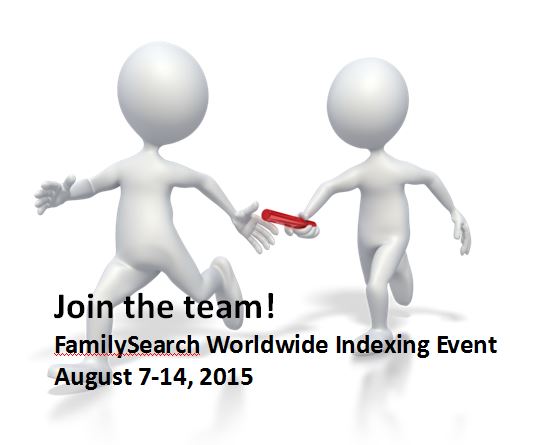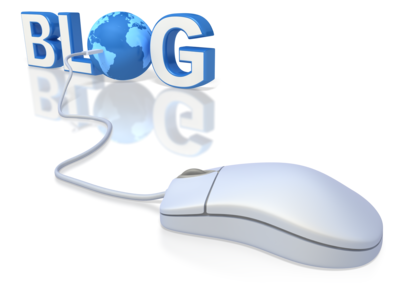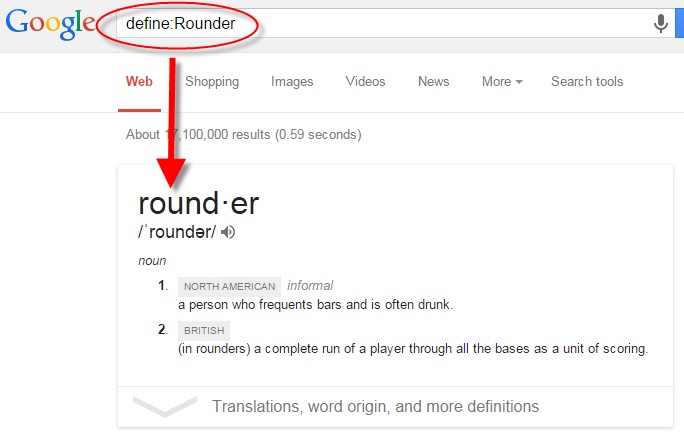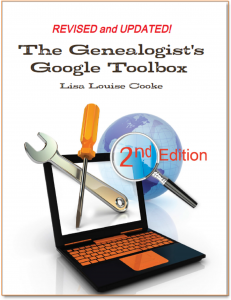by Lisa Cooke | Jul 21, 2015 | 01 What's New, Digital Archives, Evernote, images, Organization
 “If I put a PDF copy of a newspaper article or a jpeg photo into Evernote, can I get a copy back? I am putting them there for safe keeping and an easy way to archive them but I want to be able to use them in other places in the future.”
“If I put a PDF copy of a newspaper article or a jpeg photo into Evernote, can I get a copy back? I am putting them there for safe keeping and an easy way to archive them but I want to be able to use them in other places in the future.”
Recently Pam sent me the excellent question above. She’s been using Evernote for a couple of years, she says, “but not very well.” I’ve heard that before! I like how she’s now thinking carefully about not just organizing her genealogy research materials (which is important!) but also digitally archiving them effectively.
As I told Pam, folks have tried to accomplish this in a variety of ways. Here’s my two-cent’s worth on how I look at it.
First, I don’t save newspaper articles to PDF because you have to have a Premium Evernote in order to annotate PDFs and have OCR applied to them. (At least the last time I looked last week.) Personally, I prefer web clipping the article as a note and saving it directly to Evernote.
I haven’t found a simple free way to export a PDF that has been saved to Evernote back out as a PDF. This is a weakness of Evernote. (Click here for a blog post about this.)
 If you are keen on saving items to PDFs, I would suggest not bothering to store them in Evernote. If you really want a “note” of the item in Evernote, you could use this technique: First, save the PDF to your hard drive (using my Hard Drive Organization Premium Videos).
If you are keen on saving items to PDFs, I would suggest not bothering to store them in Evernote. If you really want a “note” of the item in Evernote, you could use this technique: First, save the PDF to your hard drive (using my Hard Drive Organization Premium Videos).
 Then right-click the PDF and “Create a Shortcut.” Drag and drop the short cut into a note. Now with one click of the shortcut in the Evernote note, you can instantly open the document on your hard drive and make any additional notations in the note about the item.
Then right-click the PDF and “Create a Shortcut.” Drag and drop the short cut into a note. Now with one click of the shortcut in the Evernote note, you can instantly open the document on your hard drive and make any additional notations in the note about the item.
If you would rather save the PDF to a cloud service such as Dropbox rather than your hard drive, you can right click the PDF in Dropbox and select “Share Dropbox Link” and then paste that into a note. This, again, gives you one-click access to the item.
I don’t worry about making Evernote the holding tank for absolutely everything. Sometimes other technologies and services are better suited for the task at hand. But it’s pretty easy to create connections so that Evernote is still your central service. There is another alternative called CloudHQ, which can help you export items, but it is a paid service, and I don’t think the value is there for the price when you can use the method I’ve already described.
To get more answers to questions like these about using Evernote for genealogy I invite you to follow this blog.
Resources:
 Evernote for Genealogy Quick Guides for Windows and Mac will help you begin using Evernote immediately and effectively.
Evernote for Genealogy Quick Guides for Windows and Mac will help you begin using Evernote immediately and effectively.- Become a Genealogy Gems Premium member to access the Ultimate Evernote Education: a series of videos that take you from beginner to advanced user.
- Click here to find even more resources for using Evernote for genealogy!
by Lisa Cooke | Jul 20, 2015 | 01 What's New, FamilySearch, images, Volunteer
The FamilySearch Worldwide Indexing Event: It’s like a big, happy relay race for family historians: a display of skill with record-setting accomplishments and the coming together of a community for a cause.
Last year, 66,511 FamilySearch indexers helped set a new record for the most people indexing in a 24-hour period. Their efforts resulted in more than 5.7 million records being processed in a single day!
This year, we encourage you to participate in FamilySearch’s Worldwide Indexing Event from August 7-14, 2015. “You have one week to participate by indexing at least one batch in the language of your choice,” said FamilySearch in an invitation to current indexers. “If you are fluent in French, Italian, Portuguese, or Spanish-our focus languages for 2015-please help index records in one of those languages. Let’s help our friends in other countries to find their ancestors too! All it takes is one batch indexed sometime during the week to be counted.” (Special training is available.)
I’ve learned that indexing for others feels great, but I get something out of it, too. I use indexing to become more familiar with different record types, like naturalization records, border crossings or church registers (my favorite record type) from different places or time periods. I become better at reading old handwriting and picking out genealogical details from old documents–great skills that help me in my own research!
Last year, more than 18,000 new indexers joined the fun during the 24-hour challenge. Why not do the same this year? Click here to learn more about FamilySearch volunteer indexing or read the articles below to learn about other indexing opportunities out there.
Resources:
Find Your Ancestor in Freedmen’s Bureau Records–Or Help Others Do the Same
Want to Help Index De-Classified CIA Records?
Volunteer Gem: He Indexed Milwaukee Journal Obituaries Himself
by Lisa Cooke | Jul 19, 2015 | 01 What's New, Brick Wall, images, Photographs, Research Skills, Technology
 The forensic investigator pulls up to the crime scene and snaps a fresh set of rubber gloves. She props open the trunk of the car and carefully, slowly, sweeps a tube of florescent light back and forth inside the trunk, watching with an eagle eye for the glimmer of something that shouldn’t be there.
The forensic investigator pulls up to the crime scene and snaps a fresh set of rubber gloves. She props open the trunk of the car and carefully, slowly, sweeps a tube of florescent light back and forth inside the trunk, watching with an eagle eye for the glimmer of something that shouldn’t be there.
It’s a familiar scenario – well, that is, if you watch Court TV or CSI or one of the other of myriad of television shows featuring forensics. If you’re like me, you’re fascinated by this type of investigation. Criminal investigators are not all that different from genealogists: they are looking for dead people and trying to find out what happened to dead people.
So it will be be no surprise that this recent news item grabbed my attention:

Image from the National Library of Wales website. Click to view.
Poetry and pictures drawn in the margins of a medieval manuscript–and then erased–have been rediscovered using modern imaging techniques. The Black Book of Carmarthen is the oldest known surviving Welsh language manuscript. Written in 1250, it’s now “throwing up ghosts from the past after new research and imaging work revealed eerie faces and lines of verse which had previously been erased from history,” according to a National Library of Wales blog post.
“A combination of ultraviolet light and photo editing software” were used to better see ancient doodles that had been erased from the margins. The process revealed “images, and snatches of poetry which are previously unrecorded in the canon of Welsh verse.”
We’ve featured several types of forensic analysis as applied to genealogy over the years. In fact, forensic genealogy principles inspired my popular presentation, How to Reopen and Work a Genealogical Cold Case (if you’re a Premium Member of this website you can sign in right now and watch it under Premium Videos).
Criminal investigators are not all that different from genealogists:
they are looking for dead people and trying to find out what happened to dead people.
Genealogy Gems Podcast Episodes 89 and 90 features Dr. Robert Leonard, a forensic linguist featured on an episode of Forensic Files on TV. It was such a riveting interview that I brought him back for Premium episode 48 where his brother Dr. George Leonard joined us. And way back in the pioneer days of this podcast (2008) Episode 18 featured “Vehicular Forensics.”
 It was my genealogical take on using alternative light sources on not the trunks of cars, but rather their faded license plates as they appear in old photos. That episode has been “retired” but will soon be
It was my genealogical take on using alternative light sources on not the trunks of cars, but rather their faded license plates as they appear in old photos. That episode has been “retired” but will soon be  remastered and available for listening (stay tuned to the free Genealogy Gems email newsletter for the publication announcement.) In the meantime you can read about it in depth in my very first book Genealogy Gems: Ultimate Research Strategies.
remastered and available for listening (stay tuned to the free Genealogy Gems email newsletter for the publication announcement.) In the meantime you can read about it in depth in my very first book Genealogy Gems: Ultimate Research Strategies.
Have you looked to see what lurks on the pages and photos of your ancestors? Email me and we may share it in an upcoming blog post or episode.
by Lisa Cooke | Jul 18, 2015 | 01 What's New, Google, images, Listeners & Readers, Oral History

McSorley’s Bar, a 1912 painting by John French Sloan. Wikimedia Commons image; click to view.
Get quick definitions of old and unfamiliar words with the Google “define” search operator.
Recently, Shelly wrote to us about some correspondence she didn’t understand from an older relative. One mysterious phrase particularly stuck out:
“She has mentioned several times that various relatives of mine were ’rounders.’ An example: ‘I found out later she was a real rounder.’ Does this mean a drinker, a promiscuous person, or just someone who ran around a lot as a younger person? Apparently, I come from a big family of ’rounders’!”
The answer to Shelly’s question is a perfect example of how Google can help buy medication online in canada with genealogy questions like this one. Google’s Define search operator is the key here. Go to Google.com and type define:rounder and you’ll get the following answer:

So yes indeed, it sounds like Shelly’s ancestors enjoyed “making the rounds” to drinking establishments!
Did you know that Google is getting smarter about answering our questions with search results? Instead of just showing us links to sites with the keywords in our questions, Google has started providing answers at the top of the search results. Click here to see an example!
Resource:

The Genealogist’s Google Toolbox covers the use of search operators for genealogy in depth. I’ve fully revised and updated this new second edition.
by Lisa Cooke | Jul 17, 2015 | 01 What's New, British, Digital Archives, Findmypast, images, Newspaper

Every Friday, we blog about new genealogy records online. Do any collections below relate to your family history? Please share with genealogy buddies or societies that might be interested! This week: Midwestern U.S. newspapers (Cleveland, OH and Chicago, IL) and records of Pennsylvania coal and canal workers’ and English and Welsh criminals.
CLEVELAND JEWISH NEWS. Technically this isn’t new content, but access to the Cleveland Jewish News is newly free, so it’s new to most of us! You do need to provide your name and email address for free access to 125 years of Cleveland Jewish newspapers. Subscribers have immediate access to all content as it is published; the public can access materials 90 days after they go online.
CHICAGO TRIBUNE ARCHIVE. For a very limited time–during beta testing of its new archive–old issues of The Chicago Tribune are free to search on its Archives website. Click here for their FAQ page or read a more detailed report on the National Genealogical Society (US) blog.
ENGLAND & WALES REGISTER OF CRIMINAL PETITIONS. Findmypast added over 77,000 records to its Registers of Criminal Petitions index to imaged registers of correspondence relating to criminal petitions. Documents usually give the outcome of any appeal and registers note the place of imprisonment.
PENNSYLVANIA COAL AND CANAL WORKERS. Ancestry just posted employee cards and applications from the Lehigh Coal and Navigation Company for first half of the twentieth century. “The cards may list name, marital status, occupation, birth date, record date, residence, spouse, nationality, number of children and their ages, citizenship, date range for jobs, who to notify in case of an accident, and pension date. Applications can contain other details, including parents’ names, schooling, employment record, birthplace, and height and weight.”
 When searching digitized newspaper sites, remember that the search technology used (optical character recognition) is much less thorough for historical newspapers than modern text, especially for capitalized words. Use creative search terms if searches on an ancestor’s name aren’t productive, like the person’s occupation or death date. Click here to learn more about using Google to search digitized newspaper pages, or read Lisa Louise Cooke’s newly-revised and updated book The Genealogist’s Google Toolbox, available now both in print and e-book format.
When searching digitized newspaper sites, remember that the search technology used (optical character recognition) is much less thorough for historical newspapers than modern text, especially for capitalized words. Use creative search terms if searches on an ancestor’s name aren’t productive, like the person’s occupation or death date. Click here to learn more about using Google to search digitized newspaper pages, or read Lisa Louise Cooke’s newly-revised and updated book The Genealogist’s Google Toolbox, available now both in print and e-book format.
“If I put a PDF copy of a newspaper article or a jpeg photo into Evernote, can I get a copy back? I am putting them there for safe keeping and an easy way to archive them but I want to be able to use them in other places in the future.”
 If you are keen on saving items to PDFs, I would suggest not bothering to store them in Evernote. If you really want a “note” of the item in Evernote, you could use this technique: First, save the PDF to your hard drive (using my Hard Drive Organization Premium Videos).
If you are keen on saving items to PDFs, I would suggest not bothering to store them in Evernote. If you really want a “note” of the item in Evernote, you could use this technique: First, save the PDF to your hard drive (using my Hard Drive Organization Premium Videos). Then right-click the PDF and “Create a Shortcut.” Drag and drop the short cut into a note. Now with one click of the shortcut in the Evernote note, you can instantly open the document on your hard drive and make any additional notations in the note about the item.
Then right-click the PDF and “Create a Shortcut.” Drag and drop the short cut into a note. Now with one click of the shortcut in the Evernote note, you can instantly open the document on your hard drive and make any additional notations in the note about the item. Evernote for Genealogy Quick Guides for Windows and Mac will help you begin using Evernote immediately and effectively.
Evernote for Genealogy Quick Guides for Windows and Mac will help you begin using Evernote immediately and effectively.














